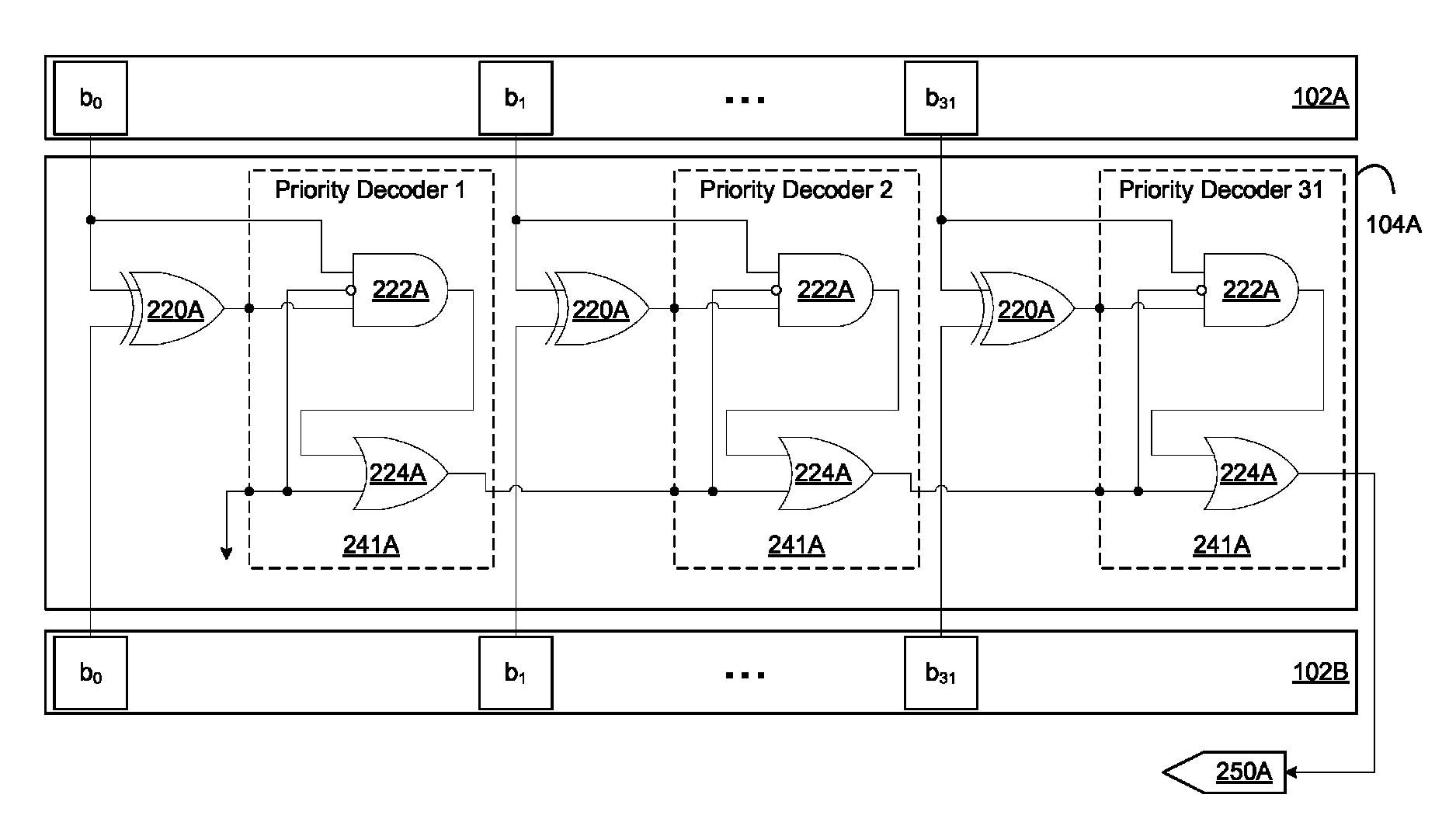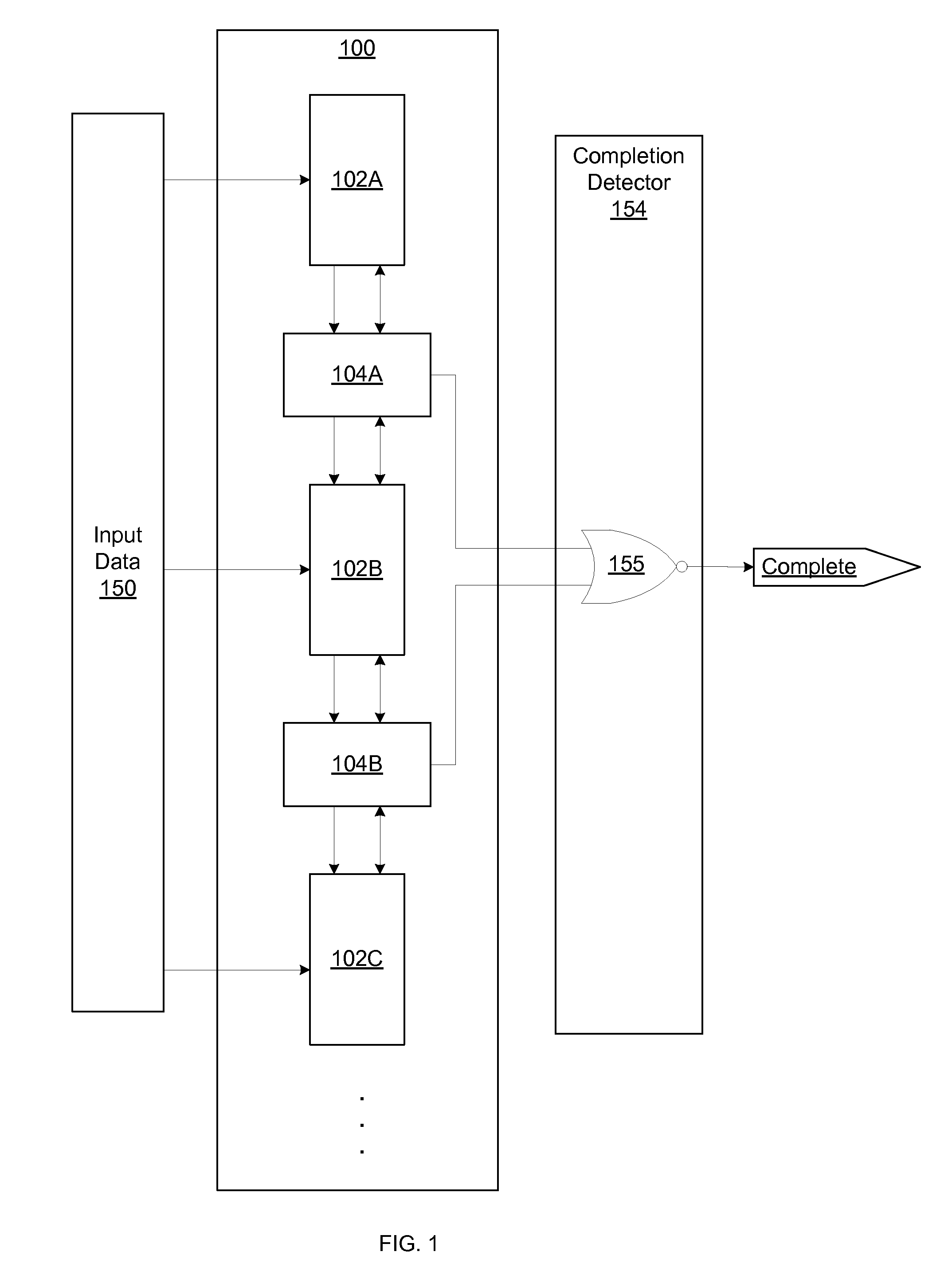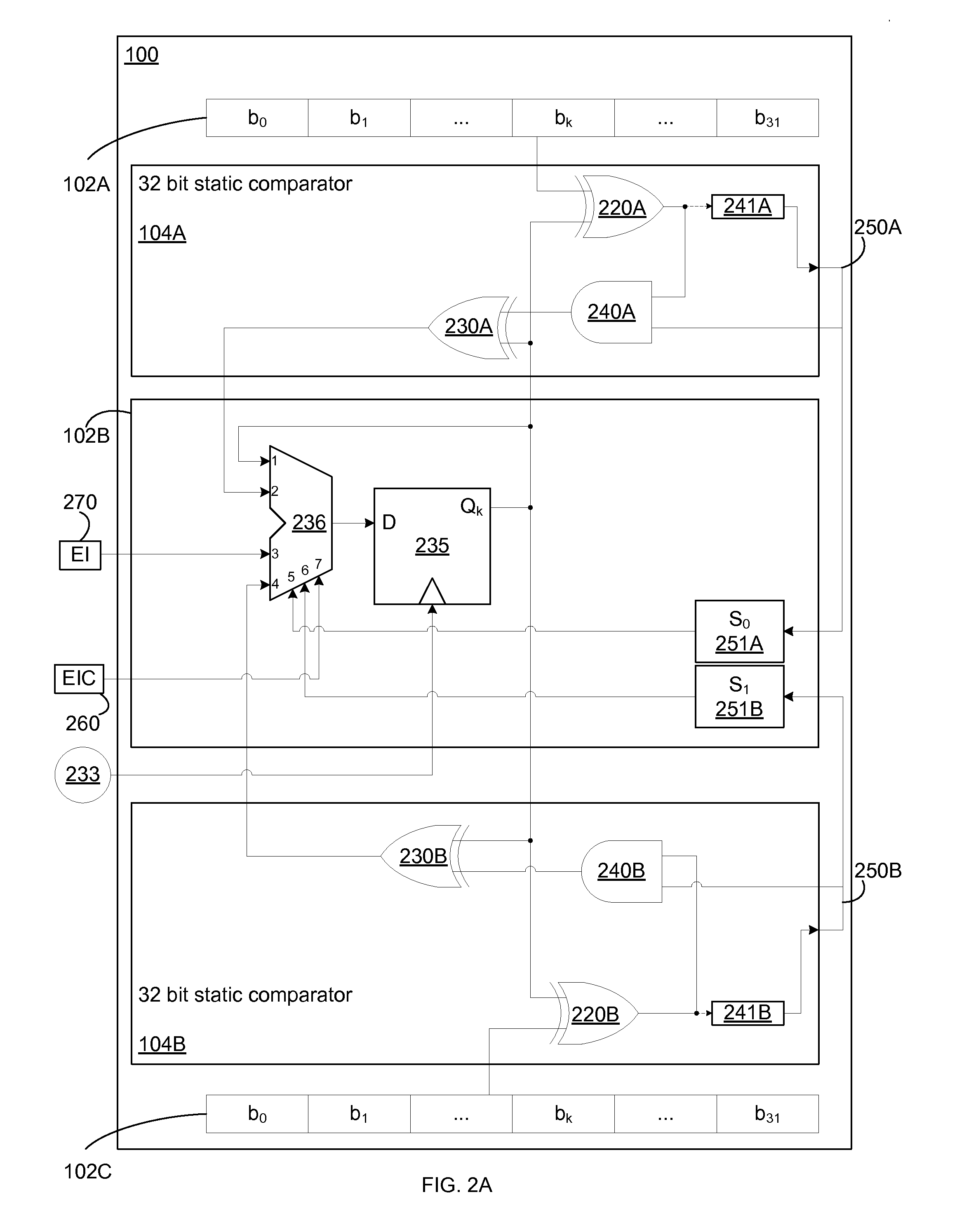Hierarchical in-memory sort engine
a sort engine and hierarchy technology, applied in the field of computer implemented sort engines, can solve the problems of large overhead, slow speed, high cost, etc., and achieve the effect of reducing overhead and cost and increasing speed
- Summary
- Abstract
- Description
- Claims
- Application Information
AI Technical Summary
Benefits of technology
Problems solved by technology
Method used
Image
Examples
Embodiment Construction
[0019]FIG. 1 depicts an exemplary one-dimensional (1D) local sorting module 100, according to an embodiment of the present disclosure. The local sorting module 100 may be used to sort data values (also referred to as data words) that it receives as input. The local sorting module 100 may be an integrated circuit (IC) on board a computer processing chip (processor), or may be an off-chip circuit operatively connected to the processor. Additional details on the placement of the local sorting module 100 within a computer's and / or a processor's architecture are discussed in greater detail below in connection with FIGS. 7A-B.
[0020]The local sorting module 100 may receive input data 150, for sorting, from an input source. The input source may include, for example, the processor, a programming circuit within or connected to the processor, caches, memory, other internal or external data sources within the memory hierarchy of the computer system within which the processor is integrated, or a...
PUM
 Login to View More
Login to View More Abstract
Description
Claims
Application Information
 Login to View More
Login to View More - R&D
- Intellectual Property
- Life Sciences
- Materials
- Tech Scout
- Unparalleled Data Quality
- Higher Quality Content
- 60% Fewer Hallucinations
Browse by: Latest US Patents, China's latest patents, Technical Efficacy Thesaurus, Application Domain, Technology Topic, Popular Technical Reports.
© 2025 PatSnap. All rights reserved.Legal|Privacy policy|Modern Slavery Act Transparency Statement|Sitemap|About US| Contact US: help@patsnap.com



